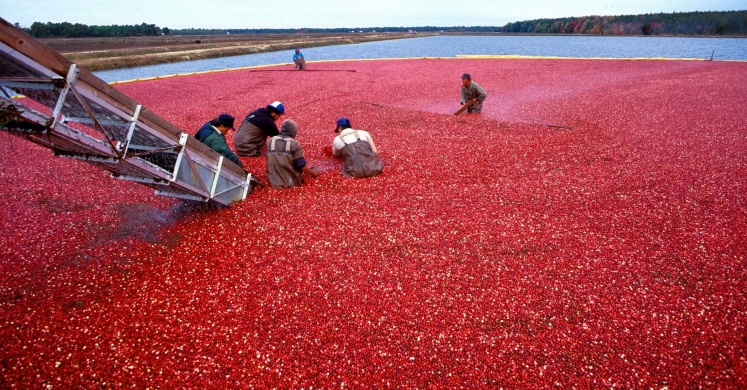Blog

#bioPGH Blog: Curious Cranberries
 A resource of Biophilia: Pittsburgh, #bioPGH is a weekly blog and social media series that aims to encourage both children and adults to reconnect with nature and enjoy what each of our distinctive seasons has to offer. From the best times to plant seasonal flora and enjoy their peak blooms, to astronomical events and creatures to keep an eye and ear out for, Phipps will keep you in the know with what’s going on in our environment!
A resource of Biophilia: Pittsburgh, #bioPGH is a weekly blog and social media series that aims to encourage both children and adults to reconnect with nature and enjoy what each of our distinctive seasons has to offer. From the best times to plant seasonal flora and enjoy their peak blooms, to astronomical events and creatures to keep an eye and ear out for, Phipps will keep you in the know with what’s going on in our environment!
A sandy bog might not be the first thing that comes to mind when we picture Thanksgiving, but without these wetlands, we’d never have that most iconic of garnishes to accompany our Thanksgiving dinners: cranberry sauce! Cranberries, a part of the heather family along with blueberries and huckleberries, grow best in the slightly acidic bogs left in the wake of retreating glaciers, and they have deep roots in American history. So let’s wade into this topic, shall we?
Long before the Pilgrims had the first Thanksgiving, cranberries were a part of life in the New World. The Wampanoags of Massachusetts had a number of uses for cranberries for everything from medicines to meals, and other tribes from the area relied on cranberries as a dye, energy boost, and treatment for various ailments. Today, the Coquille of Oregon still cultivate and market cranberries using organic practices—a legacy of their cultural belief in sustainability and the cranberry’s place in historic tradition.
Today, the most famous images involving cranberries tend to be of flooded cranberry fields; but although cranberries are grown in wetlands or bogs, they don’t actually grow year-round in standing water. Intentionally flooded fields are a part of the harvesting process. The high water allows harvest machinery to agitate the water, which separates the cranberries from the plant. The little berries have air inside them and rise to the surface, allowing for quick collection with floating inflatable or wooden booms that round up the berries. Flood waters in the boggy fields are not wasted; rather, the water is drained via canals and then used to flood the next field and then the next. The water is typically then moved back to a reservoir to be used for later harvests or during winter dormancy. (You can see a video of this process here.) All of the newly harvested cranberries are then shipped to the makers of cranberry juices and delicious cranberry sauce. Alternatively, cranberries can also be dry harvested; but since the practice is more delicate (thus, more time and labor intensive), it’s typically only used for the ~10% of berries that will be sold fresh or frozen.
If you’d like to try a cranberry sauce recipe that contains all fruit, rather than refined sugars, give the one below a try! (Note: sugar is sugar, no matter the source, and it is best to keep the consumption low. But what would Thanksgiving be without the cranberry sauce?)
12-ounce bag of cranberries (fresh or frozen)
1/3 cup pineapple juice
¼ cup apple sauce (no sugar added)
¼ cup water
juice and zest from 1 orange
(optional) honey to taste
Bring berries, pineapple juice, apple sauce, and water to a boil, then reduce heat to medium and stir until the berries begin breaking open. Add orange juice and zest, and allow to simmer 10-15 minutes before removing from heat. Chill thoroughly before serving. Recipe from wellnessmama.com
Connecting to Outdoors Tip: Plan ahead to fight the post-dinner coma on Thanksgiving! Go on a nice family or Friendsgiving walk around town and enjoy the fall weather before you tackle those dishes.
Continue the Conversation: Share your nature discoveries with our community by posting to Twitter and Instagram with hashtag #bioPGH, and R.S.V.P. to attend our next Biophilia: Pittsburgh meeting.
Resources
Oceanspray: Cranberry Harvest
Vineyard Gazette: Rubies of the Bog
Cape Cod Cranberry Growers Association
National Geographic: Cranberries, a Thanksgiving Staple, Were a Native American Superfood.
Select photos © Wikimedia User: Benson Kua CC-BY-SA-2.0 and USDA

